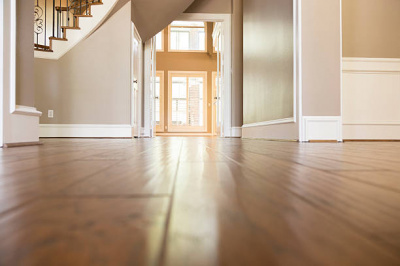What type of carpet is best for keeping the heat in?
Carpet is an excellent choice for those looking for an energy-efficient flooring option. Carpet acts as a natural insulator, trapping the heat and allowing it to remain in your home for longer. Thick pile carpets are the most effective, but so long as the carpet is laid correctly with an appropriate underlayment, any type of carpet can help you to save money on heating bills. It also helps to muffle sounds, so it's perfect for reducing noise pollution in the home.
The only downside to carpet is that it isn't as easy to maintain as other types of flooring, so if you're not keen on the idea of deep cleaning, then it might not be the right option for your needs. However, the energy savings outweigh the extra maintenance costs.
Install Appropriate Insulated Underlayment
A key factor in making sure your carpet is energy efficient is to make sure you choose an appropriate insulated underlayment. This material is designed to provide extra insulation and help keep your home warmer for longer. It works by trapping air inside the layers and preventing cold air from leaking into the house. The thickness of the underlayment will depend on the type of carpet you choose; the thicker the underlayment, the better the insulation.
Installing the right underlayment is essential for keeping your home warm and also helps prevent any wear and tear on the carpet itself. It's also important to choose the right carpet padding which will help to increase the lifespan of your carpet.

Need assistance finding flooring near you?
Get a QuoteHow energy-efficient are engineered floors?
Engineered floors are another excellent choice if you're looking for an energy-efficient flooring solution. Engineered floors are essentially layers of different materials that are laminated on top of each other. The topmost layer is usually made of hardwood and is designed to give the floor a natural appearance, while underneath it is usually a combination of engineered plywood and fiberboard.
Engineered floors are great for insulation because they are able to trap air in between the layers, which helps to keep the heat in your home. They are also incredibly durable and require very little maintenance, so they should last you for many years. However, engineered floors are not as good at trapping heat as carpets, so you may want to consider investing in additional insulation materials to get the best results.
Stone and Tile
Stone and tile floors are becoming increasingly popular in homes, thanks to their stylish appearance and ease of maintenance. Both these materials are good at trapping heat and will help to keep your home warm in the wintertime. Natural stone tiles are also naturally slip-resistant and can retain heat for longer than other materials, so they are ideal for bathrooms or kitchens where you want to keep the temperature comfortable.
However, tile floors can be cold to the touch, which might not be the most comfortable option for some people. They do require more maintenance than carpet, so it's important to stay on top of cleaning and sealing to keep them looking their best.
Consider Underfloor Heating
One of the most energy-efficient flooring solutions is underfloor heating. This type of flooring uses electrical cables and pumps to generate enough heat to warm up your entire home, so you don't need to rely on radiators or other heating systems. Underfloor heating can be used on almost any type of flooring, so it is a great way to save money on your energy bills.
As well as being energy efficient, underfloor heating also has other advantages. It is silent and removes the need for radiators, and it can also help to reduce the risk of damp and mould. If you invest in the right materials, such as insulating mats or carpets, then it should also be easier to clean and maintain than other types of flooring.
Overall, it is clear that there are a number of different flooring options available that can help you reduce your energy bills. Whether you choose carpet, engineered wood, stone, or tile, all these materials can help to keep your home warm and comfortable, while also saving you money in the long run. Installing insulation and considering underfloor heating are also important steps when deciding on the most energy-efficient flooring for your home.
In this article:

